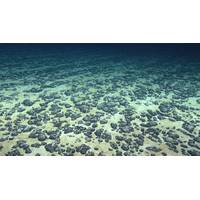
Deep-sea Mining: A New Gold Rush or Environmental Disaster?
In the depths of the Pacific Ocean between Mexico and Hawaii, trillions of potato-shaped rocks are scattered across the seabed - containing minerals such as nickel, cobalt and manganese vital for new green technologies in the global energy transition.In this ocean region - the Clarion-Clipperton Zone (CCZ) - an abundance of the rocks, known as polymetallic nodules, is increasingly fuelling debate about the mining of metals needed to produce technology such as batteries for electric vehicles.Environmentalists say deep-sea mining could cause major damage to ecosystems that scientists know little about
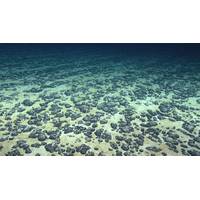
UN to Start Taking Deep-sea Mining Applications This July
standards for the new and controversial practice.Deep-sea mining would extract cobalt, copper, nickel, and manganese - key battery materials - from potato-sized rocks called "polymetallic nodules" on the ocean's floor at depths of 4 to 6 km (2.5 to 4 miles). They are abundant in the Clarion-Clipperton Zone (CCZ) in the North Pacific Ocean between Hawaii and Mexico.The ISA's governing council formulated a draft decision on Thursday after meeting in Jamaica that allows companies to file permit applications starting on July 9, a deadline set in motion by actions the island nation
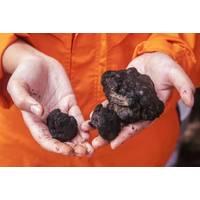
Norway's Loke Buys UK Deep-sea Mining Firm from Lockheed
Norway's Loke Marine Minerals has acquired deep-sea mining firm UK Seabed Resources (UKSR) from Lockheed Martin, the companies said on Thursday.UKSR holds a 100% interest in two deep sea mineral licences in the Clarion-Clipperton Zone (CCZ) in the Pacific Ocean, and a 19.9% interest in the Ocean Mineral Singapore, licences issued by the International Seabed Authority (ISA)."We've got the approval from the UK government... Our ambition is to start extraction from 2030," Hans Olav Hide, Loke's chairman, told Reuters.Companies that also hold exploration licences for swathes of the
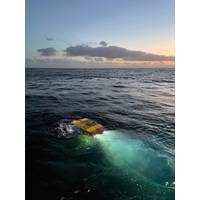
NOC Expedition Seeks Answers on Subsea Mining Impacts
and improving the supply chain of these minerals. The strategy also asks important questions about whether to engage in the extraction of metals and minerals on the seabed and how to do it.The expeditions runs from February 5 to March 26, 2023 from Costa Rica to the Central Pacific in an area called the Clarion Clipperton Zone (CCZ) at abyssal depths of almost 5,000 meters. SMARTEX is funded by the Natural Environment Research Council (NERC) and its project partners. Natural History Museum, British Geological Survey, Heriot Watt University, JNCC, (Joint Nature Conservation Committee), Liverpool University
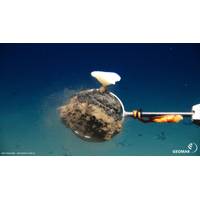
Subsea Mining Plans Pit Renewable Energy Demand Against Ocean Life
a ban on deep sea mining.As scholars who have long focused on the economic, political and legal challenges posed by deep seabed mining, we have each studied and written on this economic frontier with concern for the regulatory and ecological challenges it poses.Manganese nodules on the seafloor in the Clarion-Clipperton Zone, between Hawaii and Mexico, captured on camera by a remote vehicle in 2015. ROV KIEL 6000, GEOMAR, CC BYWhat’s down there, and why should we care?A curious journey began in the summer of 1974. Sailing from Long Beach, California, a revolutionary ship funded by eccentric billionaire
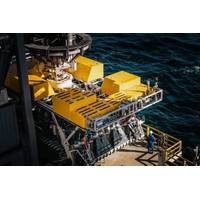
TMC's NORI, Allseas Lift 3,000t of Seabed Nodules from Pacific Ocean
TMC, the company that describes itself as an explorer of the world’s largest estimated undeveloped source of critical battery metals, said Monday that its subsidiary NORI and offshore partner Allseas had successfully concluded the first integrated system test in the Clarion Clipperton Zone of the Pacific Ocean since the 1970s, achieving all significant pilot milestones while collecting approximately 4,500 tonnes of seafloor polymetallic nodules. More than 3,000 tons of nodules were moved up a 4.3-kilometer-long riser system to the surface production vessel Hidden Gem. Another 1,500 tons of

MTR100: Deep-sea Mining May Prove Pivotal in the Climate Change Discussion
environment and testing the least impactful techniques long before Nauru’s announcement. Much of the research and technology at the forefront of the industry focuses on polymetallic nodules, which is one of three DSM techniques. These nodules are potato-sized and multi-metal, found largely in the Clarion-Clipperton Zone (CCZ) in the Pacific Ocean (any mining interests in this area are managed by the ISA). They consist of manganese, nickel, cobalt and copper, and it’s estimated that in the CCZ alone, there is 1.2 times more manganese, 1.8 times more nickel, and 3.4 times more cobalt than in
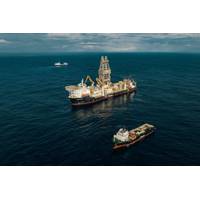
VIDEO: 'Historic Moment' as Seabed Nodules Collected and Lifted to Production Vessel Using 4 km Riser
The Metals Company (TMC) said Wednesday it had collected an initial batch of seafloor polymetallic nodules, and transported them up a 4km-long riser system to the surface in the Clarion Clipperton Zone of the Pacific Ocean.TMC, the explorer of what it says is the world’s largest estimated undeveloped source of critical battery metals, said the move was a historic one, representing the first integrated system test conducted in the area since the 1970s."Having successfully completed at-sea construction of the riser system and its integration with the flexible jumper hose and pilot nodule
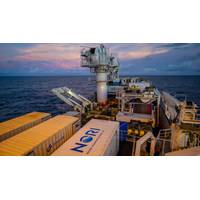
TMC's NORI Starts Monitoring Environmental Impact of of Pilot Nodule Collection System Trials
of independent scientists from leading research institutions around the world and contractors has started the next phase of an environmental baseline and impact monitoring campaign in preparation for TMC's subsidiary NORI’s ongoing pilot nodule collection system trials in the NORI-D in the Clarion Clipperton Zone of the Pacific Ocean.Aboard a dedicated 103-meter-long monitoring vessel, scientists recently conducted pre-disturbance monitoring studies on a sub-section of the NORI-D exploration area to establish an environmental baseline before NORI’s offshore strategic partner, Allseas



 February 2024
February 2024





